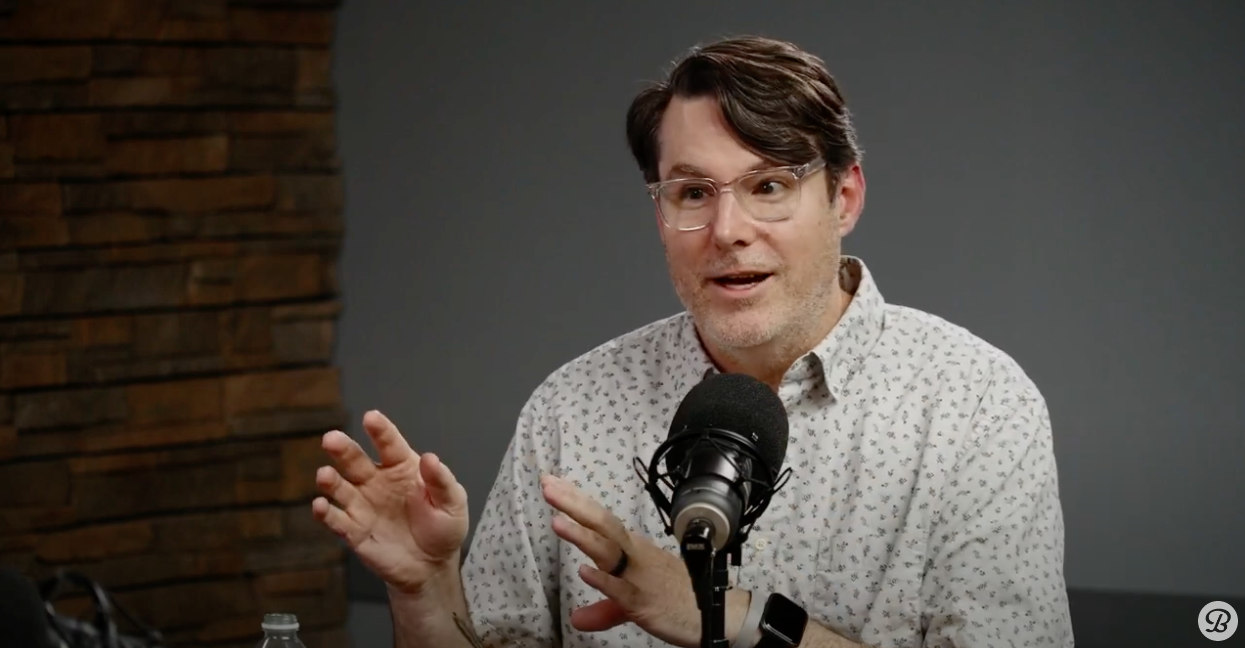A Collection of Stellar Insights
Recent Realizations, Rants and Writings

An Introduction to Kolbe Wisdom™ for Leadership, Team and Personal Development In the ever-evolving landscape of career development and team dynamics, various assessment tools have emerged, each offering unique insights into personal and professional aptitudes. Among them, the Kolbe A Index stands out as our recommended tool for helping individuals discover work they love. As a certified Kolbe Consultant with over four years of experience using the Kolbe Index, I've gained deep insights into its effectiveness and how it complements other popular assessments like the Predictive Index™, Myers-Briggs Type Indicator®, CliftonStrengths, and DiSC. Understanding the Kolbe A Index The Kolbe A Index differs fundamentally from other assessments by focusing on the "conative" part of the mind, which governs how a person takes action or reacts when striving - or when applying effort. Unlike the affective domain of personality tests (encompassing feelings, desires, and attitudes), which is the focus of tools like DISC, Myers-Briggs or the Predictive Index, the Kolbe A Index taps into innate instincts that are stable over time. This makes it an incredibly reliable tool, with a proven reliability of a 90% retake rate, in contrast to the around 44% test-retest reliability of some affective domain tools. Four Primary Zones of the Kolbe A Index Information: How a person gathers and shares information. Organization : The natural method of organizing tasks and projects. Change : The individual's instinctive approach to change and risk. Physical Space : How one interacts with and manages their physical environment. Complementing Other Assessments While the Kolbe A Index focuses on the conative, doing domain, other assessments measure traits within the affective domain. This distinction is crucial, as it means these tools are not redundant but rather complementary. For example: The Predictive Index and Myers-Briggs can shed light on a person’s desires, values, and personality, offering insights into what a person wants or wishes would happen. The Kolbe A Index, on the other hand, reveals how a person will naturally act and react, highlighting innate methods of problem-solving and action-taking. Practical Application of Kolbe with Teams In team settings, combining the insights from both conative and affective assessments can be transformative. The Kolbe A Index's WAREwithal® software predicts how people will naturally work together and the potential roadblocks in collaboration. It focuses on how individuals will act, react, and interact, while tools like the Predictive Index can explain interpersonal dynamics, like why people like or dislike each other. Assessing Tension in a Current Job with Kolbe B A significant advantage of the Kolbe B Index is its ability to identify sources of tension in one's current job. This tension often arises from a misalignment between an individual's natural instincts and the demands or expectations of their role. The Kolbe B Index can pinpoint where this discord occurs across the four primary zones (Information, Organization, Change, Physical Space), helping individuals and their managers understand potential areas of stress or dissatisfaction. For instance, an individual with a strong instinct for detailed information gathering may feel overwhelmed in a role that requires quick, high-level decision-making. Similarly, a person with a natural tendency towards maintaining structured organization might struggle in a dynamic environment that demands constant adaptation. By identifying these areas of tension, the Kolbe B Index enables individuals and their employers to make informed adjustments. This could involve tweaking job responsibilities, providing additional support or training, or even reevaluating the role to better align with an employee's conative strengths. Such insights can lead to increased job satisfaction, reduced stress, and higher productivity. Increasing Hiring Success with Kolbe C The Kolbe C Index plays a crucial role in defining the right strengths for a role and increasing hiring success. Unlike the Kolbe A Index, which assesses an individual's natural instincts, the Kolbe C Index measures the attributes and behaviors a manager believes are required for success in a specific job. This assessment helps in creating a job profile that aligns with the company’s goals and the specific demands of the role. When the results of Kolbe C are compared with a candidate's Kolbe A results, it provides a clear picture of how well the candidate's instinctive methods of operation align with the job requirements - Kolbe calls this the Range of Success. This alignment is critical for ensuring long-term job satisfaction and effectiveness. For example, if a role requires a high degree of innovation and adaptability, but a candidate's Kolbe A results indicate a preference for routine and structure, there may be a misalignment that could lead to challenges down the line. Conversely, a strong alignment between a candidate's natural strengths (as identified by Kolbe A) and the role's requirements (as outlined by Kolbe C) suggests a higher likelihood of success and job satisfaction. By leveraging both Kolbe A and C indices, organizations can make more informed hiring decisions. This approach not only increases the probability of hiring candidates who are naturally inclined to excel in their roles but also promotes a workplace environment where employees' natural strengths are recognized and utilized effectively. Leveraging Kolbe RightFit™ Hiring Incorporating the Kolbe A and C Indices into the hiring process and ongoing job performance assessments can significantly impact workplace dynamics. The Kolbe RightFit™ hiring software provides a comprehensive understanding of both an individual's innate strengths and the specific demands of a job. By aligning these two aspects, organizations can foster a more harmonious, productive, and satisfying work environment, leading to greater success for both employees and the company as a whole. Kolbe is Your Retention Strategy The Kolbe Index, particularly in its A and C variants, serves as a pivotal anchor for both professional and personal development within an organization. By offering deep insights into an individual's instinctive action modes (Kolbe A) and aligning them with the specific requirements of a role (Kolbe C), it creates a powerful framework for growth and fulfillment. This alignment not only enhances job satisfaction and performance but also fosters a culture where personal strengths are recognized and valued. As employees become more engaged and their natural talents are leveraged effectively, the organization as a whole benefits from increased innovation, efficiency, and team harmony. Thus, the Kolbe Index not only guides individual development but also shapes the organizational ethos, making it a vital tool in nurturing a thriving and dynamic workplace. Kolbe Certified Consultants™ We chose the Kolbe A Index™ is our primary retention strategy to assist agencies to hire great talent, enhance career development and optimize team performance. Its unique focus on innate instincts, combined with its high reliability, makes it an invaluable resource for understanding natural instincts in the dynamic agency workplace. When used alongside other assessments, it provides a comprehensive view of an individual's professional and interpersonal aptitudes, paving the way for more effective team collaboration and personal career satisfaction. Working with a Kolbe Consultant offers distinct benefits for both job seekers and employers, streamlining the process of finding the right fit for each role and enhancing workplace dynamics. Kolbe for Job Seekers: Self-Awareness : A Kolbe Consultant helps job seekers understand their instinctive strengths and work styles through the Kolbe A Index. This self-awareness is crucial in identifying roles and careers where they are most likely to excel and be satisfied. Career Alignment : Consultants guide individuals in aligning their natural talents with potential job opportunities, ensuring a more fulfilling and sustainable career path. Personalized Advice : Job seekers receive tailored advice on how to present their strengths in resumes and interviews, helping them stand out in the job market. Kolbe for Employers: Improved Hiring Accuracy : By using the Kolbe C Index, a Kolbe Consultant assists employers in defining the conative requirements of a job, leading to more effective and accurate hiring decisions. Enhanced Team Dynamics : Consultants help in understanding the diverse instinctive strengths of team members, fostering better collaboration, conflict resolution, and productivity. Employee Retention : By aligning employees' natural strengths with their roles, employers can significantly improve job satisfaction and retention, reducing turnover costs. In summary, a Kolbe Consultant acts as a bridge between job seekers' innate strengths and employers' needs, leading to more harmonious, effective, and satisfying workplace environments. If you're interested in learning more about Kolbe, you can visit our Kolbe store to see products and pricing.

After using The Kolbe Index™ for over four years, I finally decided to make the investment to be a Kolbe Certified™ Consultant. It was an incredible experience that only reinforces Stellar's mission to help people that love to work find the work that they love. There's a ton of deep insights and great wisdom that Kathy Kolbe and her team bring to each training and I'll unpack that over time with additional blogs and articles. For today, I wanted to start with the first question that most clients and candidates ask about The Kolbe Index™:

Remote work might be a career's silent saboteur for younger creatives. I'm going against the grain here when I say that remote work isn't for everyone or every profession. It's particularly detrimental in small-to-medium ad agencies, where the environment of an agency is an education in and of itself. If you’re an aspiring creative, say, a designer or a writer, envisioning a career in advertising, take heed. If your experience comprises mainly of remote work, particularly during the formative years of your career, you may be doing yourself a disservice. Why is remote work bad for creatives in advertising? The crucial first two to three years of agency life are simply irreplaceable. These are the years that separate the wheat from the chaff, acting as a veritable crucible for aspiring creatives. The process of enduring the rigors of below-the-line work, learning to handle rejection, taking direction from seasoned professionals, operating at an agency's energetic and often rapid pace, and using the right tools to bring ideas life; it's these challenges that mould raw talent into seasoned professionals. The immersive experience of an in-office or hybrid environment is more conducive to the growth of these skills than remote work. When you're physically present in a busy agency, you're more likely to understand the nuances of advertising that often slip through the cracks in virtual workspaces. Being in an office provides a fertile learning ground for absorbing the ethos of the industry, understanding the intricacies of your craft, and getting your hands dirty. Today, we're seeing a talent vacuum at the local level, with younger creatives' work often falling short compared to their pre-Covid counterparts. One plausible explanation could be the lack of in-person experiences, the peer collaboration and the mentorship that's ingrained into great agency culture. My suggestion? Shift your focus to local agencies, seek out hybrid or in-office roles. It's time to stop chasing the allure of remote work and start investing in solid, on-the-ground experience that will serve as the foundation for your career. Engage in an environment that challenges you, hunker down, and work to develop the skills that will let your stars start to shine. With a few years of in-agency experience under your belt, the lessons that you learn will reveal how little formal education really teaches about the real-world of advertising. In summary, here's my 5 Potential Perils of Remote Work for Young Creatives in Advertising The formative years of your advertising career are crucial and are often best spent in an in-office or hybrid environment. Remote work, while increasingly popular, may not provide the robust learning environment required for young creatives in advertising. Being physically present in an energetic agency is beneficial as it allows you to absorb the industry ethos, understand the intricacies of your craft, and cultivate collaboration and creativity. The industry is currently experiencing a local talent vacuum, possibly due to the lack of in-person experiences and the critical collaboration and mentorship that an agency setting provides. It's crucial to seek out local or hybrid roles in agencies rather than getting swayed by the allure of remote work. To make your creative mark in advertising, it's essential to 'think local', lean into hybrid or in-office opportunities, and trust the process. Remote work has its merits, but it may not be the optimal path for young creatives aspiring looking to learn the ropes of the agency business.

January and February are the two most popular months in the calendar year for job changes...and we just so happen to have an expert in the field to help. If you are looking for a new job, a new career, a new direction, looking to hit the reset button, then you don't want to miss this episode of Success in SC where Jami Mullikin, a veteran in recruiting, gives tips on how to land the job you are looking for this year. He also gives his tips on how to become more successful in your personal and professional life. In the end, Jami implores us all to love the work, not just the rewards that come as a result of working.

Building a portfolio is an essential step towards starting a successful career in advertising. As a creative director, I understand the importance of creating a portfolio that showcases your talent and demonstrates your potential to prospective employers. Here are the 7 most important things to consider when building a portfolio to start your career in advertising: Quality over Quantity Your portfolio should showcase your best work, not all of it. Include only your strongest pieces that demonstrate your skills and creativity. Quality is more important than quantity when it comes to building a portfolio that will impress potential employers. Show a Variety of Work Your portfolio should demonstrate your range and versatility as a creative professional. Include a variety of projects that showcase your ability to work with different mediums, styles, and industries. This will demonstrate your flexibility and adaptability, two traits that are highly valued in the advertising industry. Keep it Simple and Easy to Navigate Your portfolio should be easy to navigate and visually appealing. Keep the design clean and simple, allowing your work to take center stage. Use clear and concise captions to explain each project, and organize your work in a way that is easy for employers to understand and follow. Tailor Your Portfolio to the Industry Research the advertising industry and the types of work that agencies and companies are producing. Tailor your portfolio to showcase your skills in the areas that are in demand. This will help to demonstrate your understanding of the industry and your ability to meet its needs. Show Your Creative Process Include sketches, concept ideas, and notes that demonstrate your creative process. This will show potential employers how you approach a project and how you arrive at the final product. It will also demonstrate your ability to think creatively and solve problems. Include a Variety of Projects Include a variety of projects that showcase your ability to work on different types of campaigns. This could include print ads, digital campaigns, social media campaigns, branding and identity work, and more. Including a variety of projects will demonstrate your ability to work across multiple platforms and mediums. Keep it Updated Your portfolio should be a living document that is updated regularly. Keep your portfolio up-to-date with your latest work and remove any outdated pieces. This will demonstrate your commitment to your craft and your willingness to stay current in the industry. In conclusion, building a portfolio is a crucial step towards starting a career in advertising. By focusing on quality over quantity, showcasing a variety of work, keeping it simple and easy to navigate, tailoring your portfolio to the industry, showing your creative process, including a variety of projects, and keeping it updated, you will create a portfolio that will showcase your skills and potential to prospective employers. Good luck!

Jami Mullikin from Stellar Recruiting joins Jason on the newest episode of The Businessology Show. Jami is no newbie to the marketing, consulting, and ad agency scene—let's just say his resume speaks for itself. Jami and Jason talk about agency leader errors that consultants frequently fix and how Jami's vast agency experience led him to recruiting and consulting. You won't want to miss this interesting episode highlighting how agencies have changed over the past 40 years and what's to come in the future.

